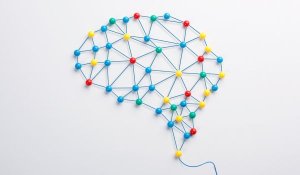
Most treatment plans begin with anti‑seizure medicines, but lifestyle changes, device therapies like vagus nerve stimulation or deep brain stimulation, and dietary approaches such as the ketogenic diet may also play a role. Family and friends often learn how to help during episodes, which can be lifesaving.
This guide looks at practical strategies for managing seizures: what medications are available, how different treatments work, and what else people can do to protect themselves. For family members, understanding these tools helps them provide better support, and for anyone living with seizures, knowledge can mean better control and fewer interruptions to daily life
Understanding seizure types and causes
Seizures are not all the same. Some people experience generalized events like tonic-clonic seizures, while others have focal seizures that affect only part of the brain. Recurrent seizures often mean the person has epilepsy, a condition that can last for years or even for life.
Common seizure triggers include missed medication, stress, lack of sleep, flashing lights, or even certain foods. Recognizing these triggers is critical for anyone hoping to prevent seizures.
Medications used to manage seizures
Most people with epilepsy begin with medication to control episodes. Different drugs are grouped by how they act on brain cells:
| Drug Type | Examples | How They Work | Notes |
|---|---|---|---|
| Sodium channel blockers | Lamictal, Tegretol, Carbatrol, Trileptal | Stabilize neuron firing by blocking sodium flow | Often first-line for focal seizures |
| Calcium channel modulators | Zonegran, Depakote | Reduce abnormal signaling through calcium channels | Useful for absence seizures |
| GABA enhancers | Neurontin, Mysoline, Sabril | Increase calming brain chemicals (GABA) to dampen electrical activity | Good for generalized seizures |
| Mixed-mechanism drugs | Topamax, Keppra, Briviact, Xcopri, Aptiom | Work on multiple brain pathways | Used when single‑mechanism drugs aren’t enough |
| Older agents | Dilantin (Epanutin) | Longstanding options, effective but with more side effects | Now less commonly used first-line |
Beyond medication
Medication is the foundation, but there’s more. Vagus nerve stimulation and deep-brain stimulation are implanted devices that help people with epilepsy who don’t respond to pills. The ketogenic diet, a high‑fat, low‑carb plan, has been shown to cut seizures in some children and adults.
Daily management
Managing seizures means taking medication on schedule, avoiding triggers, and having safety plans in place. Family members can learn how to roll someone on their side during a seizure and when to call for help.
Conclusion 
Seizures are complex, but control is possible. The key is finding a balance between medication, lifestyle, and newer therapies. Anti‑seizure medicines, like Lamictal, Keppra, or Depakote, work by calming brain electrical activity to prevent seizures. Devices like vagus nerve stimulation or deep brain stimulation, and diets like the ketogenic diet, help when medicines aren’t enough.
For people with epilepsy, identifying seizure triggers and taking steps to avoid them is just as important. Support from family members makes safety plans stronger and helps during tonic-clonic seizures.
With consistent treatment, awareness of triggers, and regular check‑ins with medical teams, many can cut down on recurrent seizures and live more freely.
Frequently asked questions
Is it possible to interrupt a seizure?
Most seizures cannot be stopped once they start. The safest move is to keep the person safe, turn them on their side, and wait until it passes.
How to stop early morning seizures?
Keeping a strict sleep schedule, avoiding triggers, and taking medication at the same time each day are key. Some people may need doses adjusted.
How are seizures triggered?
Triggers include missed medication, flashing lights, stress, illness, lack of sleep, or sudden changes in routine.
What triggers absence seizures?
Absence seizures can be set off by flashing lights, fatigue, stress, or even hyperventilation in some cases.
What are three management strategies for seizures?
Daily medication, avoiding seizure triggers, and considering devices or diets like vagus nerve stimulation or the ketogenic diet.
Can seizures be cured permanently?
Some children outgrow certain seizure types, and surgery can help in specific cases. But for most, seizures are managed rather than cured.
What can trigger epilepsy seizures?
Stress, illness, hormonal changes, missed medication, and sleep deprivation can all lead to recurrent seizures.
Can stress management reduce seizures?
Yes. Stress is a well-known trigger. Techniques like meditation or breathing exercises may help lower seizure risk.
Is exercise safe for people with epilepsy?
Usually, yes. Most activities are safe if precautions are taken, but swimming or climbing should have supervision.
Does the ketogenic diet work for adults?
Yes, it can. While often used in children, some adults also see fewer seizures on this strict diet plan.
Are all seizures the same?
No. Types range from tonic-clonic seizures to focal or absence seizures, and treatment varies with each type.
When should someone go to the hospital for a seizure?
Call emergency help if a seizure lasts over 5 minutes, if another starts right after, or if the person is injured.














